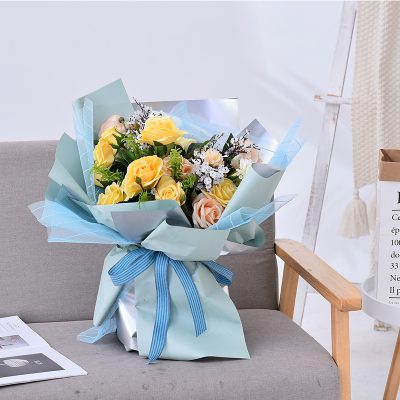Packaging is required after any product is commercialized. With the increasingly fierce competition and the enhancement of consumers’ personalization and rationality, on the one hand, enterprises should promote sales through the planning and innovation of packaging. It has become a double-edged sword in marketing. Today, I will take you into the transitional packaging link in packaging and printing to learn about the relevant content.
1. Packaging and Marketing Planning
In the marketing planning, the packaging is generally extended, because a complete packaging concept includes three processes: the front packaging of the product, the functional packaging, and the rear packaging of the product. Front packaging and rear packaging are invisible packaging, and functional packaging is tangible packaging. In the process of design and planning, packaging includes many factors such as technology, culture, art, social psychology, and ecological value, which surpasses the original single functional packaging concept. For example, liquid milk is not only packaged in plastic bags, but also in plastic bottles, glass bottles, tin cans, Tetra Pak pillows, environmentally friendly carton boxes, etc., through the conception and planning of packaging to guide the concept of consumption, beyond the fixed mode and many more. One is to innovate in terms of technology. Use advanced technology to create differentiated packaging; the second is to adapt and innovate from the cultural aspect, so that products are marked with cultural imprints to meet people’s consumer psychology; the third is to combine the characteristics of the industry. For example, in the beverage industry, the current paper-plastic composite packaging and PET bottles are the mainstream. In the pharmaceutical industry, its packaging should be innovative in image design, and try to add value to consumers in terms of appearance design and color.
2. Reflections caused by excessive packaging
Excessive packaging wastes resources and damages the environment. The rapid development of the economy has made the proportion of packaging materials in domestic waste more and more important. It is very important to effectively control and reduce packaging waste to reduce the amount of solid waste. According to the survey, more than 200 of the more than 600 cities in the country are surrounded by various kinds of garbage. After the Spring Festival, Night, Valentine’s Day, Mid-Autumn Festival and other festivals, various families began to organize New Year’s goods and gifts. A large number of beautiful packaging boxes of plastic, paper, rattan wood, and metal were thrown away as garbage. These garbage are so beautiful that people feel distressed. This kind of packaging can be seen everywhere in daily life, and most of the packaging contains raw materials that are difficult to handle, which is not conducive to environmental protection. These “beautiful garbage” not only waste resources, but also crack the ecology and pollute the environment.
The “Law on the Prevention and Control of Environmental Pollution by Solid Waste” clearly stipulates: “The standardization administrative department of the State Council shall organize the formulation of relevant standards in accordance with the national economic and technical conditions, the prevention and control of solid waste environmental pollution, and the technical requirements of products to prevent excessive packaging from causing environmental pollution.” The law also stipulates that enterprises that produce, sell, and import products and packaging that are legally listed in the compulsory recycling catalogue must recycle the products and packaging in accordance with relevant state regulations. The law clearly states that the state encourages scientific research and production units to research and produce film coverings and commodity packaging that are easy to recycle, dispose of, or degrade in the environment. International experience data shows that packaging cannot exceed 13%-15% of the value of the product itself. Therefore, market thresholds and relevant standards should be established to limit excessive packaging in terms of value ratio, weight ratio, and volume ratio.
According to the experience of developed countries, there are mainly three types of control methods for excessive packaging: one is standard control, that is, the volume of the packaging, the gap between the packaging and the commodity, the number of packaging layers, the ratio of packaging cost to commodity value, etc. set limits. Such as South Korea, Japan, Canada and other countries; the second is economic means control, such as packaging tax on non-paper packaging and packaging that cannot meet recycling requirements, such as Belgium; through garbage metering and charging, guide consumers to choose simple packaging, such as the Netherlands; The third is to increase the responsibility of producers. It is stipulated that commodity producers are responsible for recycling commodity packaging. Usually, the method of deposit system can be used to entrust relevant commercial institutions to recycle packaging. In order to facilitate recycling, producers will actively choose packaging designs that use less materials and are easy to recycle, such as Germany, France and other countries.









